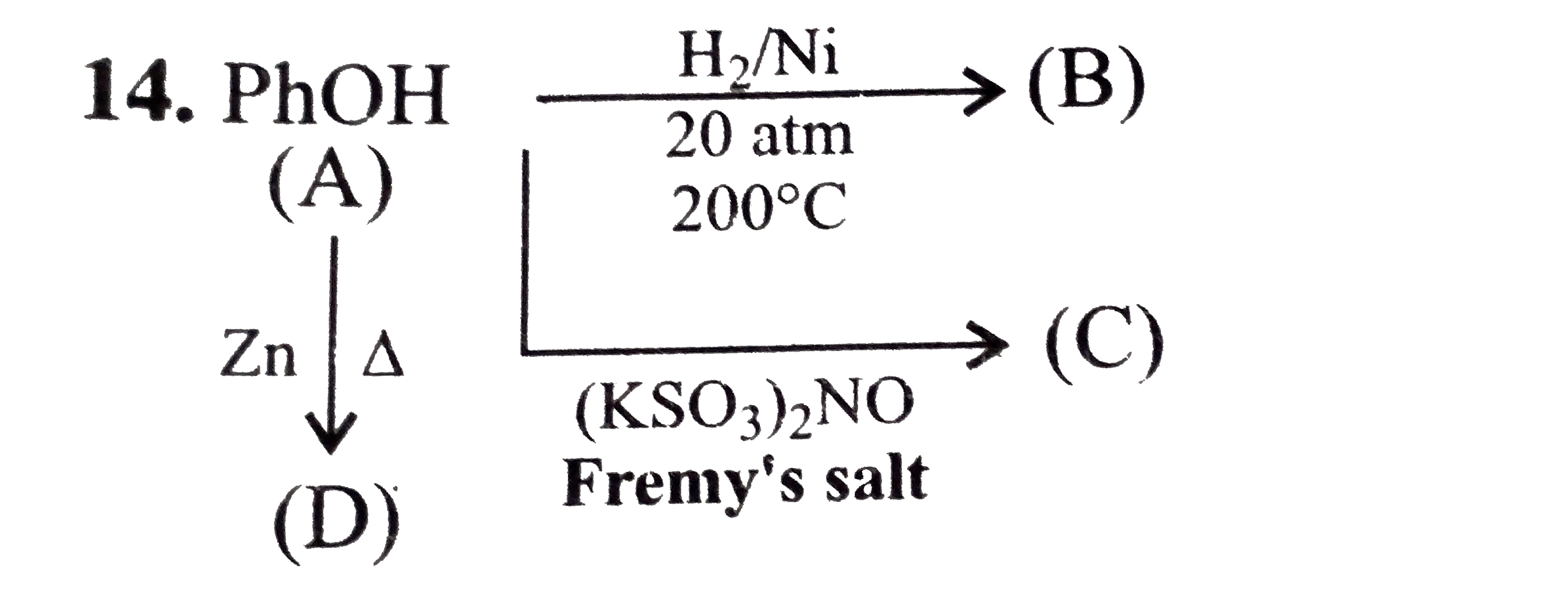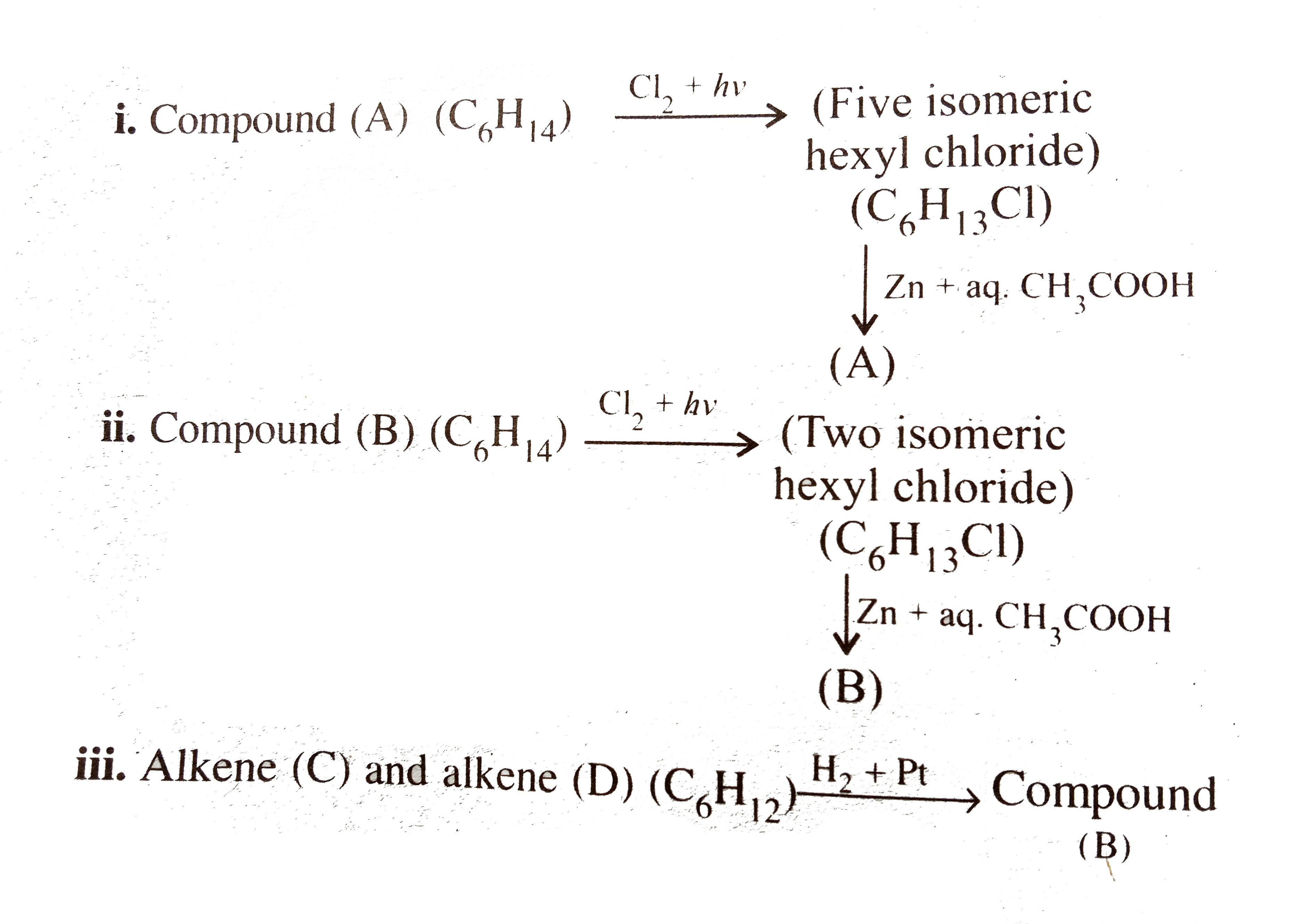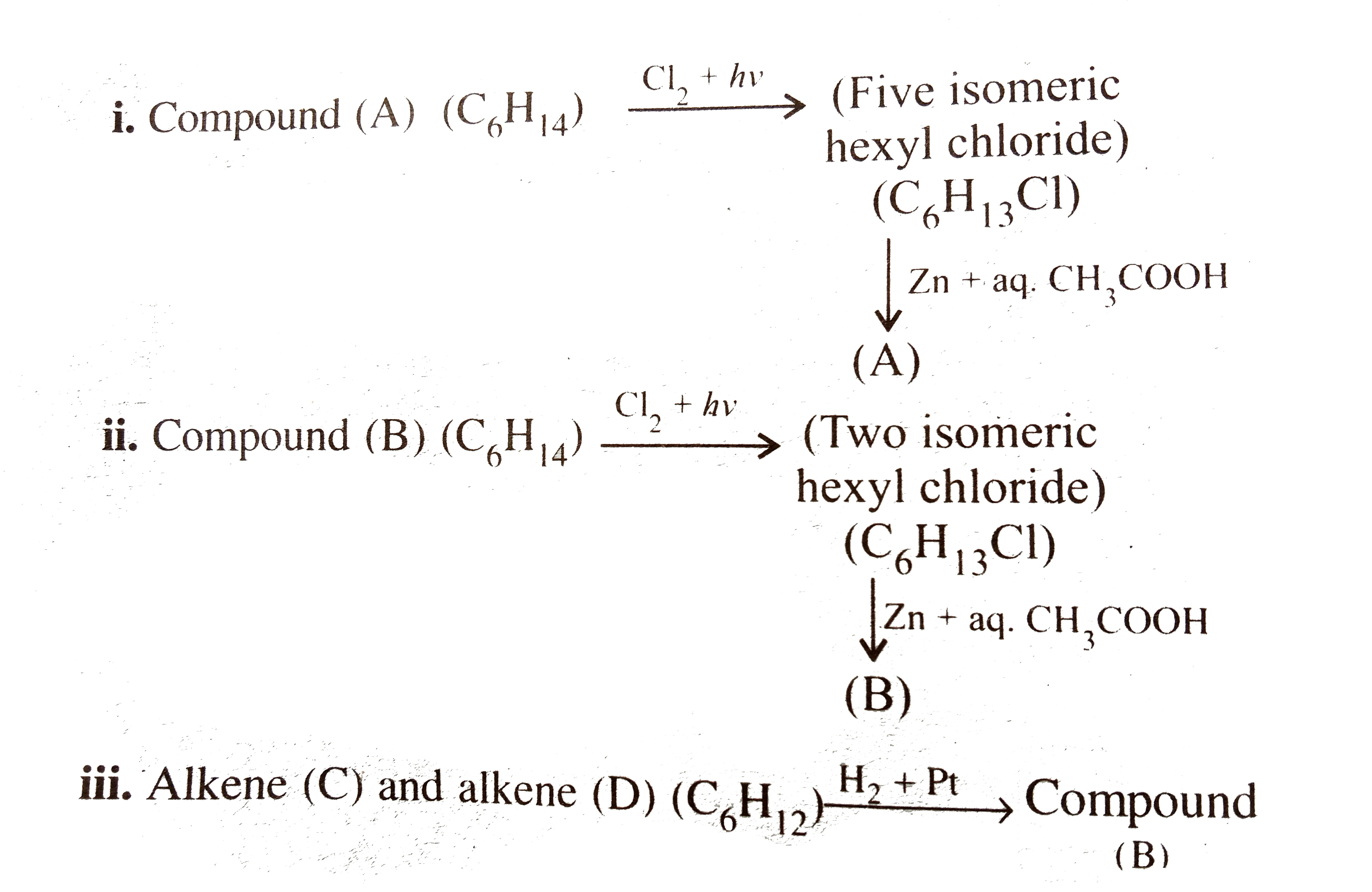Match each of the following four structures with one of the compound A-D on the basis of the following experimental facts
Compound (A),(B) and ( C ) are optically active, but compound (D) is not
Compound (C ) gives the same products as compound (D) on treatment with periodic acid, But compound (B) gives a different product.
Compound (A) does not react with periodic acid.

Compound A-D are respectively?
I,III,IV&II
I,IV,II&III
IV,I,III,&II
I,IV,III&II
The correct Answer is:D
Step by step video & image solution for Match each of the following four structures with one of the compound A-D on the basis of the following experimental facts Compound (A),(B) and ( C ) are optically active, but compound (D) is not Compound (C ) gives the same products as compound (D) on treatment with periodic acid, But compound (B) gives a different product. Compound (A) does not react with periodic acid. Compound A-D are respectively? by Chemistry experts to help you in doubts & scoring excellent marks in Class 12 exams.
Updated on:21/07/2023Topper's Solved these Questions
- TEST PAPERSBOOK - ALLENCHAPTER - TEST PAPERSEXERCISE - CHEMISTRY
25 Videos
- TEST PAPERSBOOK - ALLENCHAPTER - TEST PAPERSEXERCISE - MATHEMATICS
2 Videos
- TEST PAPERSBOOK - ALLENCHAPTER - TEST PAPERSEXERCISE - part-2 Chemisty
18 Videos
- TEST PAPER 4BOOK - ALLENCHAPTER - TEST PAPER 4EXERCISE - CHEMISTRY
45 Videos
- THERMODYNAMICS BOOK - ALLENCHAPTER - THERMODYNAMICS EXERCISE - EXERCISE -4
18 Videos
Similar Questions
Knowledge Check
The d- and l- forms of an optically active compound are called
AenantiomersBdiastereoisomersCanomersDepimers

The compounds (B), (C ), (D), respectively are:
View SolutionWhich of the following compounds is resistant to periodic acid oxidation ?
View Solutioni. Compound (A)

ii. Compound (B)
iii. Alkene (C) and alkane (D)
Compound (A) is:
View Solutioni. Compound (A)

ii. Compound (B)
iii. Alkene (C) and alkane (D)
Compound (A) is:
View SolutionA compound (A) with molecular formula C5H10 gives one monochlorination product. Compound (A) is:
View SolutionThe compound (A) in the previous question is further hydrolysed in dilute acidic medium to give compounds (B) and (C). The compounds (B) and (C) are :
View SolutionA compound 'A' when reacts with LiAlH4 it gives two compounds B and C along with LiCl. Compounds A, B and C respectively are
View Solution

